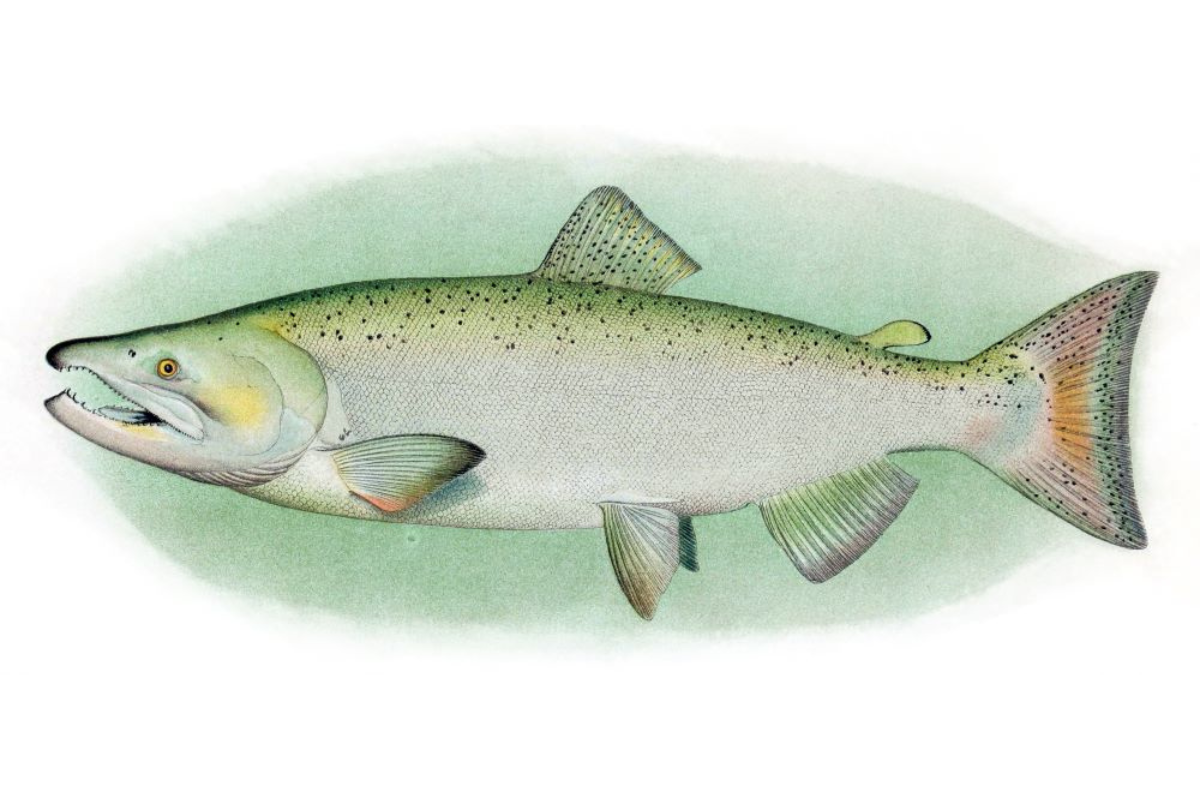
We’ve talked several times about the three species of wild salmon that run each year on the Copper River: coho, sockeye, and Chinook. Today we’re going to tell you about the granddaddy of them all, the Chinook, or king, salmon.
Chinook wild salmon, named after an Indigenous Salish village, are the largest of the Copper River species (and all Pacific Ocean species), earning them the nickname of king salmon. These whoppers usually top out at around three feet and 30 pounds. Some grow even larger, reaching almost five feet long and nearly 130 pounds.
Their size is just one of the traits that make them the most prized salmon for subsistence, commercial, and recreational fishing.
Chinook Wild Salmon Lifecycle
Like all Copper River wild salmon, Chinook are anadromous fish: they begin and end their life in freshwater and spends their adult years in the open ocean. There are as many as 49 distinct spawning areas on the Copper River and its tributaries. Young Chinook salmon hatch and spend a full year developing in these icy lakes, streams, and rivers.
These fish are called fry and have camouflage marking patterns of spots and stripes as protection against predators including birds and larger fish. Fry eat insects and crustaceans.
When they are ready to head for the ocean, young Chinook salmon lose their camouflage markings. They take on their adult appearance—a white belly, silvery sides, a dark, blue/green head and back, and unusual black gums that no other salmon species exhibits.
Once they make it to the open sea, they will feed on fish and grow for 1-8 years. Chinook are powerful swimmers and use their speed to evade predators, including orcas, sharks, and sea lions.
Once they mature, usually between the ages of three and seven years, Chinook head back to the place of their birth to spawn. A full-grown female Chinook salmon can lay as many as 14,000 eggs in nests dug in the gravel bottom of the upper Copper River system.
Both male and female Chinook change color as they prepare to make their upstream journey, turning from blue/green to reddish brown. The males also develop a long, hooked upper jaw.
All Chinook salmon die after spawning, ending their life cycles and enriching the ecosystem of the entire Copper River Basin.
Chinook Stock and Management
Chinook salmon are the least abundant of the Copper River wild salmon species and the stock began to decrease further in in the mid-2000s. Researchers don’t fully understand the complex reasons for the decline and harvests are adjusted to protect the species.
The drop has led to species protection. Allowable harvests of chinook are based on careful research determining the health of the overall population. As the fifth largest watershed in Alaska, the Copper River is home to a sizable percentage of spawning Northern Pacific Chinook salmon.
The population is managed by what is called escapement. Escapement refers to the number of fish that make it to the spawning grounds each year. If the population is down, fewer fish can be harvested as they head upstream to allow for adequate resupply of eggs, fry, and eventually adult fish.
The science of fishery management is complex, relying on expert recommendations to maintain the ecosystem balance that is vital to the environmental health of the area.
Order Copper River Salmon HERE
Chinook Salmon for Diners
Why is Chinook the most prized of all the wild salmon species? Not only is it the largest wild Pacific salmon, but it also has a rich, complex flavor palette. The fish is firm while maintaining a delicate flake. It is a beautiful deep color and looks stunning on the table.
Chinook has the highest fat content of any Pacific wild salmon, giving it a silky, buttery consistency. This complex flavor and texture profile is what draws diners to dishes made with this magnificent fish. It is particularly popular as a steak with a crisp exterior.
No matter how you prefer your Copper River Chinook salmon prepared you will not be disappointed. Living up to its King Salmon nickname, it is a delicacy served by fine chefs around the world.
Sources: Alaska Dept. of Fish and Game, NOAA Fisheries